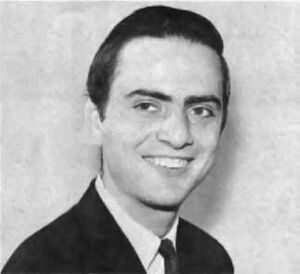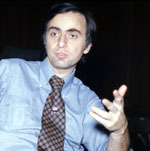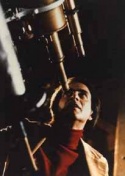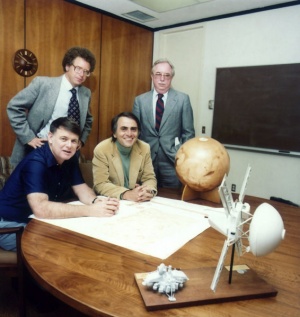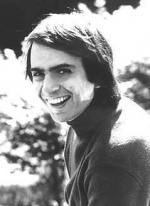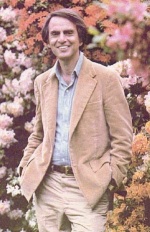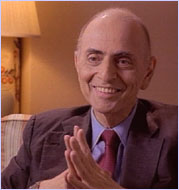Directory:Carl Sagan
| Carl Sagan | ||
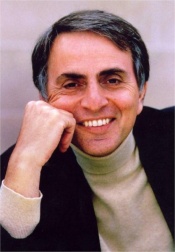 | ||
| Born | [[Birth Date:=1934-11-09|1934-11-09]] [[Birth_City:=Brooklyn|Brooklyn]], [[Birth_State_Name:=New York|New York]], [[Birth_Country_Name:=United States|USA]] Template:Country data US | |
|---|---|---|
| Died | [[Death Date:=1996-12-20|1996-12-20]] [[Death_City:=Seattle|Seattle]], [[Death_State_Name:=Washington|Washington]], [[Death_Country_Name:=United States|USA]] Template:Country data US | |
| Occupation | Astronomer | |
| Contact | [http://www.carlsagan.com www.carlsagan.com] [[Email:=webmaster@carlsagan.com | Mail]] |
- This article in Centiare Directory space was copied from Wikipedia, as a temporary demonstration. This article will either be replaced by its rightful legal owners, or removed as other Directory listings are authored from scratch and can serve as basic demonstration examples. If you wish to edit this article under the provisions of the GFDL, please contact the Centiare administrator for access.
Carl Edward Sagan (November 9, 1934 – December 20, 1996) was an American astronomer, astrobiologist, and highly successful science popularizer. He pioneered exobiology and promoted the Search for Extra-Terrestrial Intelligence (SETI). He is world-famous for writing popular science books and for co-writing and presenting the award-winning 1980 television series Cosmos: A Personal Voyage, then the most-watched PBS program of all time[1] until 1990's The Civil War. A book to accompany the program was also published. He also wrote the novel Contact, the basis for the 1997 film of the same name starring Jodie Foster. During his lifetime, Sagan published more than 600 scientific papers and popular articles and was author, co-author, or editor of more than 20 books. In his works, he frequently advocated scientific skepticism, humanism, and the scientific method.
Education and scientific career
Carl Sagan was born in Brooklyn, New York.[2] His parents were Jewish; his father, Sam Sagan, was a garment worker and his mother, Rachel Molly Gruber, was a housewife. Carl was named in honor of Rachel's biological mother, Chaiya/ Clara, "the mother she never knew," in Sagan's words. Sagan graduated from Rahway (NJ) High School in 1951.[3] He attended the University of Chicago, where he received a bachelor's degree (1955) and a master's degree (1956) in physics, before earning his doctorate (1960) in astronomy and astrophysics. During his time as an undergraduate, Sagan spent some time working in the laboratory of the geneticist H. J. Muller. From 1962 to 1968, he worked at the Smithsonian Astrophysical Observatory.
Sagan taught at Harvard University until 1968, when he moved to Cornell University. He became a full professor at Cornell in 1971 and directed the Laboratory for Planetary Studies there. From 1972 to 1981 he was Associate Director of the Center for Radio Physics and Space Research at Cornell.
Sagan was a leader in the U.S. space program since its inception and worked as an adviser to NASA since the 1950s. (One of his many duties during his tenure at the space agency included briefing the Apollo astronauts before their flights to the Moon.) Sagan contributed to most of the unmanned missions that explored the solar system, placing experiments on many robotic space expeditions. He conceived the idea of adding an unalterable and universal message on spacecraft destined to leave the solar system that could be understood by any extraterrestrial intelligence that might find it. Sagan assembled the first physical message that was sent into space: a gold-anodized plaque, attached to the space probe Pioneer 10, launched in 1972. Pioneer 11, also containing the plaque, was launched the following year. He continued to refine his designs and the most elaborate such message he helped to develop and assemble was the Voyager Golden Record that was sent out with the Voyager space probes in 1977.
Sagan taught at Cornell a course on critical thinking until his death in 1996 from a rare bone marrow disease. The course had only a limited number of seats, although hundreds of students tried to attend. He chose about 20 students who were allowed to enroll by reading huge piles of application essays. The course was discontinued after his death.
Scientific achievements
Sagan was central to the discovery of the high surface temperatures of the planet Venus. In the early 1960s, no one knew for certain the basic conditions of Venus' surface and Sagan listed the possibilities in a report (which were later depicted for popularization in a Time-Life book, Planets) — his own view was that the planet was dry and very hot, as opposed to the balmy paradise others had imagined. He had investigated radio emissions from Venus and concluded that there was a surface temperature of 900°F (500°C). As a visiting scientist to NASA's Jet Propulsion Laboratory, he contributed to the first Mariner missions to Venus, working on the design and management of the project. Mariner 2 confirmed his views on the conditions of Venus in 1962.
Sagan was among the first to hypothesize that Saturn's moon Titan[4] and Jupiter's moon Europa may possess oceans (a subsurface ocean, in the case of Europa) or lakes, thus making the hypothesized water ocean on Europa potentially habitable for life. Europa's subsurface ocean was later indirectly confirmed by the spacecraft Galileo. Sagan also helped solve the mystery of the reddish haze seen on Titan, revealing that it is composed of complex organic molecules constantly raining down to the moon's surface.
He furthered insights regarding the atmospheres of Venus and Jupiter as well as seasonal changes on Mars. Sagan established that the atmosphere of Venus is extremely hot and dense with crushing pressures. He also perceived global warming as a growing, man-made danger and likened it to the natural development of Venus into a hot, life-hostile planet through greenhouse gasses. Sagan speculated (along with his Cornell colleague Edwin Ernest Salpeter) about life in Jupiter's clouds, given the planet's dense atmospheric composition rich in organic molecules. He studied the observed color variations on Mars’ surface, concluding that they were not seasonal or vegetation changes as most believed, but shifts in surface dust caused by windstorms.
Sagan is best known, however, for his research on the possibilities of extraterrestrial life, including experimental demonstration of the production of amino acids from basic chemicals by radiation.[5]
Scientific advocacy
Sagan was a proponent of the search for extraterrestrial life. He urged the scientific community to listen with radio telescopes for signals from intelligent extraterrestrial lifeforms. So persuasive was he that by 1982, he was able to get a petition advocating SETI published in the journal Science, signed by 70 scientists, including seven Nobel Prize winners. This was a tremendous turnaround in the respectability of this controversial field. Sagan also advocated sending probes to explore the solar system.
He was editor-in-chief of Icarus (a professional journal concerning planetary research) for 12 years. He cofounded the Planetary Society, the largest space-interest group in the world, with over 100,000 members in more than 140 countries, and was a member of the SETI Institute Board of Trustees. Sagan served as Chairman of the Division for Planetary Science of the American Astronomical Society, as President of the Planetology Section of the American Geophysical Union, and as Chairman of the Astronomy Section of the American Association for the Advancement of Science.
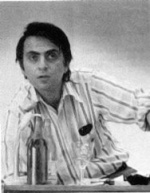
Sagan helped Dr. Frank Drake write the Arecibo message, a radio message beamed into space from the Arecibo radio telescope on November 16, 1974, aimed at informing extraterrestrials about Earth.
At the height of the Cold War, Sagan deliberately ignored the "extraordinary claims" test for evidence when a mathematical climate model suggested that a substantial nuclear exchange could upset the delicate balance of life on Earth. He was the last of five authors — the "S" of the "TTAPS" report as the research paper came to be known. He eventually co-authored the scientific paper that predicted nuclear winter[6] would follow nuclear war. He also co-authored the book A Path Where No Man Thought: Nuclear Winter and the End of the Arms Race, a comprehensive examination of the phenomenon of nuclear winter.
Sagan famously predicted on ABC's Nightline in 1991 that smoky oil fires in Kuwait (set by Saddam Hussein's army during the first Gulf War) would cause a worldwide ecological disaster of black clouds resulting in global cooling. Retired atmospheric physicist and climate change skeptic Fred Singer dismissed Sagan's prediction as nonsense, predicting that the smoke would dissipate in a matter of days. In his book The Demon-Haunted World (see below), Sagan gave a list of errors he had made (including his predictions about the effects of the Kuwaiti oil fires) as an example of how science is tentative, a self-correcting process.
Sagan is also known for being involved as a researcher in Project A119, a secret US Air Force operation whose purpose was to explode an atomic bomb on Earth's Moon.
Social concerns
Sagan believed that the Drake equation suggested that a large number of extraterrestrial civilizations would form, but that the lack of evidence of such civilizations (the Fermi paradox) suggests that technological civilizations tend to destroy themselves rather quickly. This stimulated his interest in identifying and publicizing ways that humanity could destroy itself, with the hope of avoiding such destruction and eventually becoming a space-faring species.
Sagan became more politically active after marrying novelist Ann Druyan, performing acts of civil disobedience at the Nevada Nuclear Weapons Test Site during the Nuclear freeze era, for which he was publicly arrested twice, along with Daniel Ellsberg, Philip Zimmermann and Martin Sheen. He was also arrested for participating in an anti-war protest during the Vietnam era. He spoke out against President Ronald Reagan's Strategic Defense Initiative, or the "Star Wars" program, which he felt was technically impossible to build and perfect, far more expensive to create than for an enemy to defeat through decoys and other means, and destabilizing to Cold War nuclear weapons disarmament progress.
Carl Sagan was an avid user of marijuana, although he never admitted this publicly during his life. Under the pseudonym "Mr. X," he wrote an essay concerning cannabis smoking in the 1971 book Marihuana Reconsidered, whose editor was Lester Grinspoon.[7] In his essay, Sagan commented that marijuana encouraged some of his works and enhanced experiences. After Sagan's death, Grinspoon disclosed this to Sagan's biographer, Keay Davidson. When the biography, entitled Carl Sagan: A Life, was published in 1999, the marijuana exposure stirred some media attention.[8][9][10]
Popularization of science
Sagan's capability to convey his ideas allowed many people to better understand the cosmos. He delivered the 1977/1978 Christmas Lectures for Young People at the Royal Institution. He hosted and, with Ann Druyan, co-wrote and co-produced the highly popular thirteen-part PBS television series Cosmos: A Personal Voyage (modeled on Jacob Bronowski's The Ascent of Man).
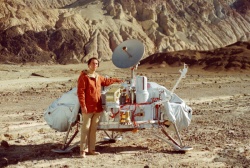
Cosmos covered a wide range of scientific subjects including the origin of life and a perspective of our place in the universe. The series was first broadcast by the Public Broadcasting Service in 1980. It won an Emmy and a Peabody Award; according to the NASA Office of Space Science, it has been since broadcast in more than 60 countries and seen by over 600 million people.
Sagan also wrote books to popularize science, such as Cosmos, which reflected and expanded upon some of the themes of A Personal Voyage, and became the best-selling science book ever published in English,[11] The Dragons of Eden: Speculations on the Evolution of Human Intelligence, which won a Pulitzer Prize, and Broca's Brain: Reflections on the Romance of Science. Sagan also wrote the best-selling science fiction novel Contact, but did not live to see the book's 1997 motion picture adaptation, which starred Jodie Foster and won the 1998 Hugo Award.
From Cosmos and his frequent appearances on The Tonight Show, Sagan became associated with the catch phrase "billions and billions." (He never actually used that phrase in Cosmos,[12] but his distinctive delivery and frequent use of billions (with noted emphasis on the opening "b") made this a favorite phrase of Johnny Carson, Gary Kroeger, Mike Myers, Bronson Pinchot, Harry Shearer and others, doing many affectionate impressions of him. Sagan took this in good humor, and his final book was entitled Billions and Billions (see below) and opened with a tongue-in-cheek discussion of this catch phrase.) A humorous unit of measurement, the Sagan, has now been coined to stand for any count of at least 4,000,000,000.
He wrote a sequel to Cosmos, Pale Blue Dot: A Vision of the Human Future in Space, which was selected as a notable book of 1995 by The New York Times. Carl Sagan also wrote an introduction for the bestselling book by Stephen Hawking, A Brief History of Time.
Sagan presents a speculation concerning the origin of the swastika symbol in his book, Comet. Sagan hypothesized that a comet approached so close to Earth in antiquity that the jets of gas streaming out of it were visible, bent by the comet's rotation. The book Comet reproduces an ancient Chinese manuscript that shows comet tail varieties; most are variations on simple comet tails, but the last shows the comet nucleus with four bent arms extending from it, showing a swastika.
Sagan caused mixed reactions among other professional scientists. On the one hand, there was general support for his popularization of science, his efforts to increase scientific understanding among the general public, and his positions in favor of scientific skepticism and against pseudoscience; most notably his thorough debunking of the book Worlds in Collision by Immanuel Velikovsky. On the other hand, there was some unease that the public would misunderstand some of the personal positions and interests that Sagan took as being part of the scientific consensus. Sagan's arguments against Velikovsky's catastrophism have been criticized by some of his colleagues. Robert Jastrow of NASA's Goddard Institute for Space Studies wrote: "Professor Sagan's calculations, in effect, ignore the law of gravity. Here, Dr. Velikovsky was the better astronomer."
Late in his life, Sagan's books developed his skeptical, naturalistic view of the world. In The Demon-Haunted World: Science as a Candle in the Dark, he presented tools for testing arguments and detecting fallacious or fraudulent ones, essentially advocating wide use of critical thinking and the scientific method. The compilation, Billions and Billions: Thoughts on Life and Death at the Brink of the Millennium, published in 1997 after Sagan's death, contains essays written by Sagan, such as his views on abortion, and his widow Ann Druyan's account of his death as a skeptic, agnostic, and freethinker.
In 2006, Ann Druyan edited Sagan's 1985 Gifford Lectures in Natural Theology into a new book, The Varieties of Scientific Experience: A Personal View of the Search for God, in which he elaborates on his views of divinity in the natural world.
Personality
In 1966, Sagan was asked to contribute an interview about the possibility of extraterrestrials to a proposed introduction to the film 2001: A Space Odyssey. According to an unsourced anecdote in The Independent, Sagan "responded by saying that he wanted editorial control and a percentage of the film's takings, which was rejected."[13]
In 1994, Apple Computer began developing the Power Macintosh 7100. They chose the internal code name "Carl Sagan," the joke being that the mid-range PowerMac 7100 would make Apple "billions and billions".[14] Though the project name was strictly internal and never used in public marketing, when Sagan learned of this internal usage, he sued Apple Computer to use a different project name — other projects had names like "Cold fusion" and "Piltdown Man", and he was displeased at being associated with what he considered pseudoscience. Though Sagan lost the suit, Apple engineers complied with his demands anyway, renaming the project "BHA" (Butt-Head Astronomer). Sagan sued Apple for libel over the new name, claiming that it subjected him to contempt and ridicule. Sagan lost this lawsuit as well; still, the 7100 saw another name change: it was lastly called "LAW" (Lawyers Are Wimps).
Sagan wrote about religion and the relationship between religion and science, observing statements such as: "The idea that God is an oversized white male with a flowing beard, who sits in the sky and tallies the fall of every sparrow is ludicrous. But if by 'God,' one means the set of physical laws that govern the universe, then clearly there is such a God. This God is emotionally unsatisfying... it does not make much sense to pray to the law of gravity."[15] Sagan is also widely regarded as a freethinker or skeptic, one of his most famous quotations (as seen in Cosmos) being, "Extraordinary claims require extraordinary evidence." (This is also known, under different wording, as the principle of Laplace — attributed to Pierre-Simon Marquis de Laplace (March 23, 1749 – March 5, 1827), a French mathematician and astronomer: "The weight of evidence for an extraordinary claim must be proportioned to its strangeness.")
Sagan married three times; the famous biologist, Lynn Margulis (mother of Dorion Sagan and Jeremy Sagan) in 1957, artist Linda Salzman (mother of Nick Sagan) in 1968, and author Ann Druyan (mother of Sasha and Sam) in 1981, with whom he remained married until his death.
Isaac Asimov described Sagan as one of the only two people he ever met who were just plain smarter than Asimov himself. The other was computer scientist and expert on artificial intelligence, Marvin Minsky.
Sagan and UFOs
Sagan had some interest in UFO reports from at least 1964, when he had several conversations on the subject with Jacques Vallee (Westrum 37). Though quite skeptical of any extraordinary answer to the UFO question, Sagan thought that science should study the phenomenon, at least because there was widespread public interest in UFO reports.
Stuart Appelle notes that Sagan "wrote frequently on what he perceived as the logical and empirical fallacies regarding UFOs and the abduction experience. Sagan rejected an extraterrestrial explanation for the phenomenon but felt there were both empirical and pedagogical benefits for examining UFO reports and that the subject was, therefore, a legitimate topic of study" (Appelle 22).
In 1966, Sagan was a member of the Ad Hoc Committee to Review Project Blue Book. The committee concluded that the U.S. Air Force's Project Blue Book had been lacking as a scientific study, and recommended a university-based project to give the UFO phenomenon closer scientific scrutiny. The Condon Committee (1966-1968), led by physicist Edward Condon, and their still-controversial final report, formally concluded that there was nothing anomalous about UFO reports.
Ron Westrum writes that "The high point of Sagan's treatment of the UFO question was the AAAS's symposium in 1969. A wide range of educated opinions on the subject were offered by participants, including not only proponents as James McDonald and J. Allen Hynek but also skeptics like astronomers William Hartmann and Donald Menzel. The roster of speakers was balanced, and it is to Sagan's credit that this event was presented in spite of pressure from Edward Condon" (Westrum 37-38). With physicist Thornton Page, Sagan edited the lectures and discussions given at the symposium; these were published in 1972 as UFO's: A Scientific Debate.
Jerome Clark writes that Sagan's perspective on UFO's irked Condon: "... though a skeptic, [Sagan] was too soft on UFOs for Condon's taste. In 1971, he considered blackballing Sagan from the prestigious Cosmos Club" (Clark 603).
Some of Sagan's many books examine UFOs (as did one episode of Cosmos) and he recognized a religious undercurrent to the phenomenon. However, Westrum writes that "Sagan spent very little time researching UFOs ... he thought that little evidence existed to show that the UFO phenomenon represented alien spacecraft and that the motivation for interpreting UFO observations as spacecraft was emotional" (Westrum 37).
It is sometimes noted that Sagan's generally skeptical attitude to UFOs conflicted sharply with his views in a 1966 book he wrote with Russian astronomer and astrophysicist I.S. Shklovskii, Intelligent Life in the Universe. Here Sagan instead argued that technologically advanced alien civilizations were common and he considered it very probable that Earth had been visited many times in the past.
Yet only a few years later in UFO's: A Scientific Debate, Sagan was now highly skeptical of interstellar visitation. As to the physical possibility of interstellar travel, Sagan brought up the proposed Bussard ramjet as an interstellar vehicle. While not terribly practical, Sagan thought such proposed propulsion systems were nevertheless important because they demonstrated that there were conceivable ways of accomplishing interstellar travel "without bumping into fundamental physical constraints. And this suggests that it is premature to say that interstellar space flight is out of the question." But to this Sagan added, "I believe the numbers work out in such a way that UFO's as interstellar vehicles is extremely unlikely, but I think it is an equally bad mistake to say that interstellar space flight is impossible."
Sagan again revealed his views on interstellar travel in his 1980 Cosmos series. He scoffed at the idea that UFOs are visiting Earth, maintaining that the chances any alien spacecraft would visit the Earth are vanishingly small. However, in another episode he said the stars would "beckon" to humanity, and described the Bussard ramjet as one way humans might achieve interstellar travel. In one of his last written works, Sagan again claimed that there was no evidence that aliens have actually visited the Earth, either in the past or present (Sagan, 1996: 81-96, 99-104).
Legacy
After a long and difficult fight with myelodysplasia, Sagan died of pneumonia at the age of 62 on December 20, 1996, at the Fred Hutchinson Cancer Research Center in Seattle, Washington. Sagan was a significant figure, and his supporters credit his importance to his popularization of the natural sciences, opposing both restraints on science and reactionary applications of science, defending democratic traditions, resisting nationalism, defending humanism, and arguing against geocentric and anthropocentric views.
The landing site of the unmanned Mars Pathfinder spacecraft was renamed the Carl Sagan Memorial Station on July 5 1997. Asteroid 2709 Sagan is also named in his honor.
The 1997 movie Contact (see above), based on Sagan's novel of the same name and finished after his death, ends with the dedication "For Carl."
On November 9, 2001, on what would have been Sagan’s 67th birthday, the NASA Ames Research Center dedicated the site for the Carl Sagan Center for the Study of Life in the Cosmos. "Carl was an incredible visionary, and now his legacy can be preserved and advanced by a 21st century research and education laboratory committed to enhancing our understanding of life in the universe and furthering the cause of space exploration for all time," said NASA Administrator Daniel Goldin. Ann Druyan was at the center as it opened its doors on October 22, 2006.
Sagan's son, Nick Sagan, wrote several episodes in the Star Trek franchise. In an episode of Star Trek: Enterprise entitled "Terra Prime," a quick shot is shown of the relic rover Sojourner, part of the Mars Pathfinder mission, placed by a historical marker at Carl Sagan Memorial Station on the Martian surface. The marker displays a quote from Sagan: "Whatever the reason you're on Mars, I'm glad you're there, and I wish I was with you."
Sagan's student, Steve Squyres, would lead the team that landed the Spirit Rover and Opportunity Rover successfully on Mars in 2004.
Awards and medals
- Annual Award for Television Excellence - 1981 - Ohio State University - PBS series Cosmos
- Apollo Achievement Award - National Aeronautics and Space Administration
- Chicken Little Honorable Mention - 1991 - National Anxiety Center; a dubious achievement award from an organization which is skeptical about many pessimistic appraisals of the state of the environment
- NASA Distinguished Public Service Medal - National Aeronautics and Space Administration (twice)
- Emmy - Outstanding Individual Achievement - 1981 - PBS series Cosmos
- Emmy - Outstanding Informational Series - 1981 - PBS series Cosmos
- Exceptional Scientific Achievement Medal - National Aeronautics and Space Administration
- Helen Caldicott Leadership Award - Women's Action for Nuclear Disarmament
- Homer Award - 1997 - Contact
- Hugo Award - 1981 - Cosmos
- Humanist of the Year - 1981 - Awarded by the American Humanist Association
- In Praise of Reason Award - 1987 - Committee for the Scientific Investigation of Claims of the Paranormal
- Isaac Asimov Award - 1994 - Committee for the Scientific Investigation of Claims of the Paranormal
- John F. Kennedy Astronautics Award - American Astronautical Society
- John W. Campbell Memorial Award - 1974 - Cosmic Connection: An Extraterrestrial Perspective
- Joseph Priestley Award - "For distinguished contributions to the welfare of mankind"
- Klumpke-Roberts Award of the Astronomical Society of the Pacific - 1974
- Konstantin Tsiolkovsky Medal - Awarded by the Soviet Cosmonauts Federation
- Locus Award 1986 - Contact
- Lowell Thomas Award - Explorers Club - 75th Anniversary
- Masursky Award - American Astronomical Society
- Oersted Medal - 1990 - American Association of Physics Teachers
- Peabody Award - 1980 - PBS series Cosmos
- Prix Galbert - The international prize of Astronautics
- Public Welfare Medal - 1994 - National Academy of Sciences
- Pulitzer Prize for General Non-Fiction - 1978 - The Dragons of Eden
- SF Chronicle Award - 1998 - Contact
- Carl Sagan Memorial Award - Named in his honor
- Named 99th "Greatest American" on the June 5 2005 "Greatest American" show on the Discovery Channel.
Personal Information
| Personal Information |
|---|
|
Physical: White Male • Education: B.S., Physics, University of Chicago, 1955 |
Books and media
By Sagan
- Sagan, Carl, Jonathon Norton Leonard and editors of Life, Planets. Time, Inc., 1966
- I.S. Shklovskii coauthor, Intelligent Life in the Universe. Random House, 1966, 509 pgs
- UFO's: A Scientific Debate. Cornell University Press, 1972, 310 pgs
- Communication with Extraterrestrial Intelligence. MIT Press, 1973, 428 pgs
- Sagan, Carl, et. al. Mars and the Mind of Man. Harper & Row, 1973, 143 pgs
- Jerome Agel coauthor, Cosmic Connection: An Extraterrestrial Perspective. Anchor Press, 1973, ISBN 0-521-78303-8, 301 pgs
- Broca's Brain: Reflections on the Romance of Science. Ballantine Books, 1974, ISBN 0-345-33689-5, 416 pgs
- Other Worlds. Bantam Books, 1975
- Sagan, Carl, et. al. Murmurs of Earth: The Voyager Interstellar Record. Random House, 1977
- The Dragons of Eden: Speculations on the Evolution of Human Intelligence. Ballantine Books, 1978, ISBN 0-345-34629-7, 288 pgs
- Cosmos. Random house, 1980. Random House New Edition, May 7 2002, ISBN 0-375-50832-5, 384 pgs
- Sagan, Carl et. al. The Nuclear Winter: The World After Nuclear War. Sidgwick & Jackson, 1985
- Ann Druyan coauthor, Comet. Ballantine Books, 1985, ISBN 0-345-41222-2, 496 pgs
- Contact. Simon and Schuster, 1985; Reissued August 1997 by Doubleday Books, ISBN 1-56865-424-3, 352 pgs
- Richard Turco coauthor, A Path Where No Man Thought: Nuclear Winter and the End of the Arms Race. Random House, 1990, 499 pgs
- Ann Druyan coauthor, Shadows of Forgotten Ancestors: A Search for Who We Are. Ballantine Books, October 1993, ISBN 0-345-38472-5, 528 pgs
- Pale Blue Dot: A Vision of the Human Future in Space. Random House, November 1994, ISBN 0-679-43841-6, 429 pgs
- The Demon-Haunted World: Science as a Candle in the Dark. Ballantine Books, March 1996, ISBN 0-345-40946-9, 480 pgs
- Ann Druyan coauthor, Billions and Billions: Thoughts on Life and Death at the Brink of the Millennium. Ballantine Books, June 1997, ISBN 0-345-37918-7, 320 pgs
- The Varieties of Scientific Experience: A Personal View of the Search for God. 1985 Gifford lectures, Penguin Press, 2006, ISBN 1-59420-107-2, 304 pgs
About Sagan
- Appelle, Stuart, "Ufology and Academia: The UFO Phenomenon as a Scholarly Discipline" (pages 7-30 in UFOs and Abductions: Challenging the Borders of Knowledge, David M. Jacobs, editor; University Press of Kansas, 2000; ISBN)
- Clark, Jeromne, The UFO Book. Visible Ink Press, 1998, 750 pgs
- Davidson, Keay, Carl Sagan: A Life. John Wiley & Sons, August 30 1999, ISBN 0-471-39536-6, 560 pgs
- Head, Tom (editor), Conversations with Carl Sagan. University Press of Mississippi, 2005, ISBN 1-57806-736-7, 170 pgs
- Poundstone, William, Carl Sagan: A Life in the Cosmos. Henry Holt & Company, October 1 1999, ISBN 0-8050-5766-8, 473 pgs
- Westrum, Ron, "Limited Access: Six Natural Scientists and the UFO Phenomenon" (pages 30-55 in Jacobs)
- Zemeckis, Robert, Contact. Warner Studios, 1997, IMDB
Footnotes
- ^ According to nasa.gov, [1], [2] and [3]
- ^ For biographical information see Carl Sagan: A Life in the Cosmos by William Poundstone. Henry Holt & Company (October 1 1999) ISBN 0-8050-5766-8
- ^ Carl Sagan: A Life by Keay Davidson, pages 33-41. John Wiley & Sons (August 30 1999) ISBN 0-471-25286-7
- ^ Much of Sagan's research in the field of planetary science is outlined by William Poundstone (see reference #2, above). Poundstone's biography of Sagan includes an eight page list of Sagan's scientific articles published from 1957 to 1998. Detailed information about Sagan's scientific work comes from the primary research articles. Example: Sagan, C., Thompson, W. R., and Khare, B. N. Titan: A Laboratory for Prebiological Organic Chemistry, Accounts of Chemical Research, volume 25, page 286 (1992). There is commentary on this research article about Titan at The Encyclopedia of Astrobiology, Astronomy, and Spaceflight.
- ^ According to The Columbia Encyclopedia, Sixth Edition.
- ^ Turco RP, Toon OB, Ackerman TP, Pollack JB, Sagan C. Climate and smoke: an appraisal of nuclear winter, Science, volume 247, pages 166-176 (1990). PubMed abstract|JSTORE link to full text article. Carl Sagan discussed his involvement in the political nuclear winter debates and his erroneous global cooling prediction for the Gulf War fires in his book, The Demon-Haunted World.
- ^ Marihuana Reconsidered by Lester, M.D. Grinspoon. Publisher: Quick American Archives (2nd edition; April 1 1994) ISBN 0-932551-13-0. Sagan's essay is available online.
- ^ BBC news story that includes mention of Sagan's marijuana use.
- ^ San Francisco Examiner article on Sagan's marijuana use. Also includes an article by Lester Grinspoon.
- ^ Carl Sagan: Toking Astronomer – article in Cannabis Culture magazine.
- ^ According to The Science Channel.
- ^ Refuted by Carl Sagan himself in his book Billions and Billions, pages 3-4. Ballantine Books, June 1997, ISBN 0-345-37918-7
- ^ 2001: The secrets of Kubrick's classic" by Anthony Barnes (October 23 2005).
- ^ An account of this lawsuit is given in Carl Sagan: A Life in the Cosmos, pages 363-364 and 374-375.
- ^ A similar quote can be found in Chapter 23 of Sagan's book Broca's Brain. "Some people think God is an outsized, light-skinned male with a long white beard, sitting on a throne somewhere up there in the sky, busily tallying the fall of every sparrow. Others — for example Baruch Spinoza and Albert Einstein — considered God to be essentially the sum total of the physical laws which describe the universe. I do not know of any compelling evidence for anthropomorphic patriarchs controlling human destiny from some hidden celestial vantage point, but it would be madness to deny the existence of physical laws."
External links
- CarlSagan.com - homepage of Cosmos Studios, which sells the Cosmos series on DVD.
- "Mr. X" - Sagan's anonymous 1969 essay in Lester Grinspoon's Marihuana Reconsidered, 1971.
- Life Beyond Earth and the Mind of Man 1975 - a symposium held at Boston University that explores the implications of the possible existence of extraterrestrial life within the galaxy and the universe, with Sagan as a panel member.
- "The Quest for Extraterrestrial Intelligence" - 1978 essay by Carl Sagan.
- "Can We Know the Universe?" - 1979 essay by Carl Sagan, taken from his book Broca's Brain.
- "Dreams are Maps" - 1987 essay by Sagan.
- Carl Sagan's Religion of Science - an analysis of Sagan's view of religion as expressed in his writings.
- The Cosmos According to Carl Sagan - Review and critique of Sagan's criticism toward religion.
- "Carl Sagan Takes Questions" - from Sagan's 1994 "Wonder and Skepticism" keynote address delivered in Seattle June 23–26.
- Charlie Rose January 5, 1995 - interview with Sagan on his book Pale Blue Dot: A Vision of the Human Future in Space.
- Talk of the Nation May 3, 1996 - Ira Flatow interviews Sagan on his book The Demon-Haunted World: Science as a Candle in the Dark.
- Charlie Rose May 27, 1996 - interview with Sagan on his book The Demon-Haunted World.
- "Carl Sagan, Cornell astronomer, dies today (Dec. 20) in Seattle" - Cornell University press release.
- "In Memory of Carl Sagan" Skeptic remembers Carl, with tributes from Tom McDonough, James Randi, Michael Shermer, and others. Also includes quotations from selected works of Sagan.
- The Sagan Planet Walk - New York planetary exhibit created in memory of Carl Sagan.
- Contact Film Review - an analysis of the film and novel, by Larry Klaes.
- Carl Sagan editorials - reviews of his books; includes some of his articles (including the one on abortion).
- "Carl Sagan, Cosmos, and the Space Artists" - recollections by artist and friend of Carl, Donald Davis.
- 25th anniversary rebroadcast of Cosmos on The Science Channel - includes a brief biography of Sagan.
